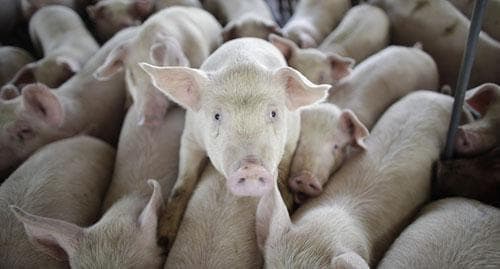Advertisement
Animals, People, and Disease
Resume
The H1N1 virus is more commonly known as “swine flu.” That doesn’t mean you can catch it from a pig, but it does point to the source of the infection.
And it’s far from the only disease that can make the jump to humans from other species. Avian flu. Rabies. Ringworm. Hantavirus. West Nile Virus. Even Ebola and HIV likely originated in animals and made the leap.
Now, with the world a global village and populations soaring, experts warn these species-hopping diseases may arise more frequently, and become more dangerous.
This hour, On Point: animals, people, and disease.
You can join the conversation. Tell us what you think — here on this page, on Twitter, and on Facebook.Guests:
Joining us from New York is Donald G. McNeill Jr., science and health reporter for The New York Times.
From Columbus, Ohio, we're joined by Lonnie King, dean of The Ohio State University College of Veterinary Medicine and former director of the Center for Disease Control's National Center for Zoonotic, Vector-Borne and Enteric Diseases.
And from Oklahoma City, we're joined by Susan Little, professor of veterinary parasitology at the Center for Veterinary Health Sciences, Oklahoma State University. She's a member of the board of directors of the Companion Animal Parasite Council, which is sponsoring the "Pets, People and Pathogens" conference in Providence, Rhode Island next week.
This program aired on November 10, 2009.